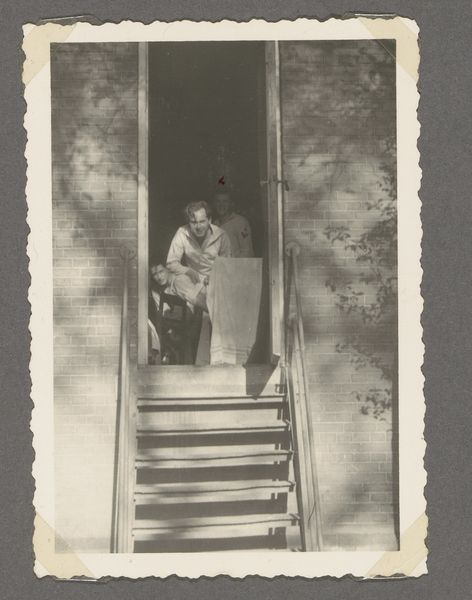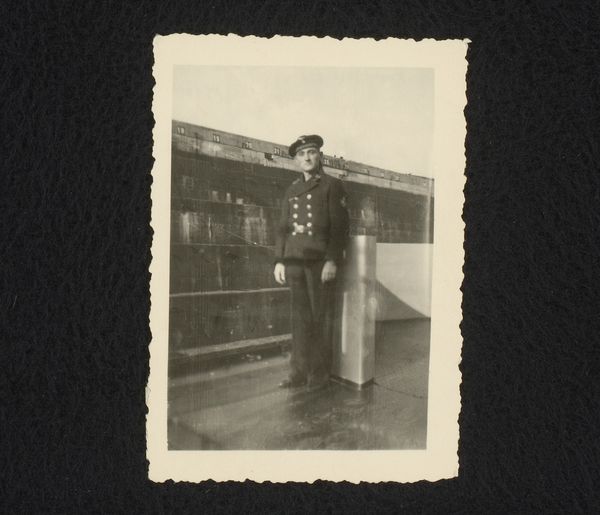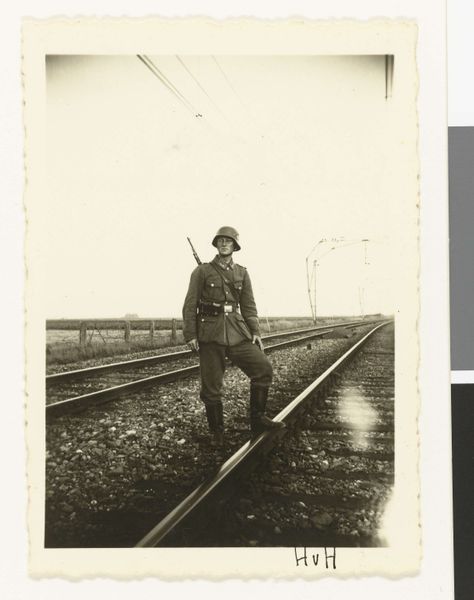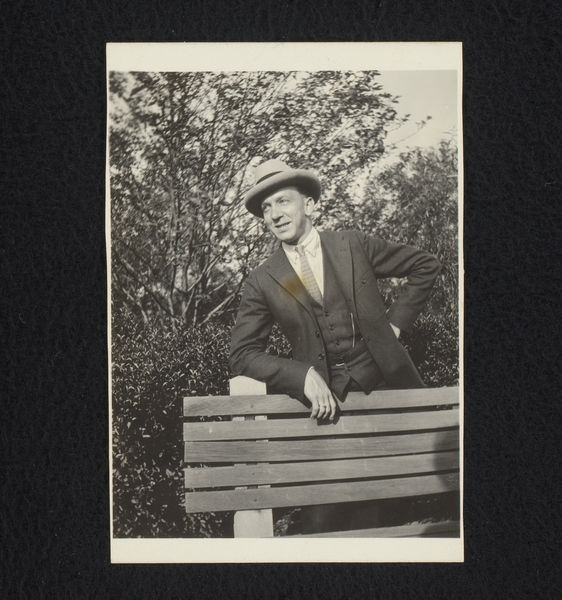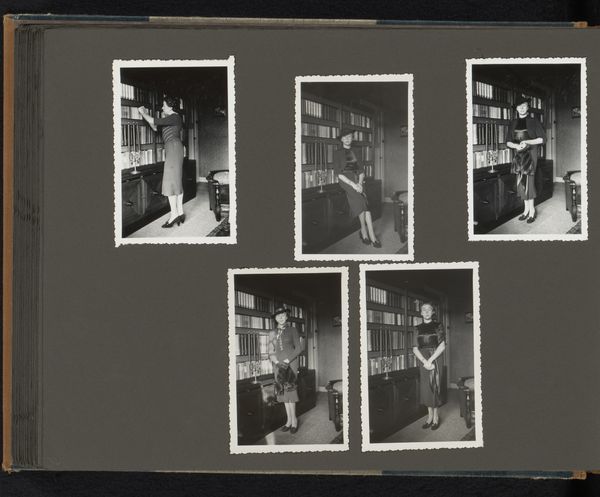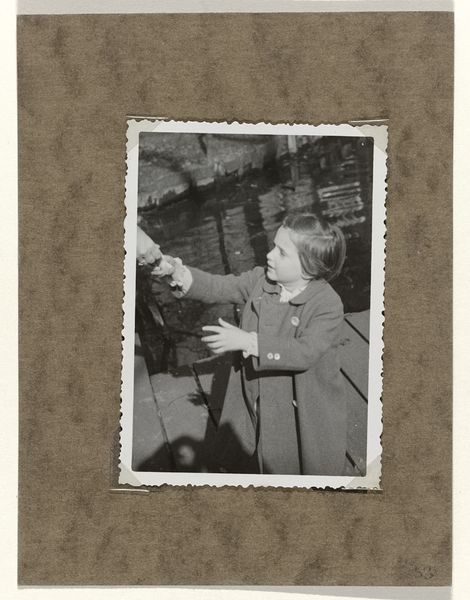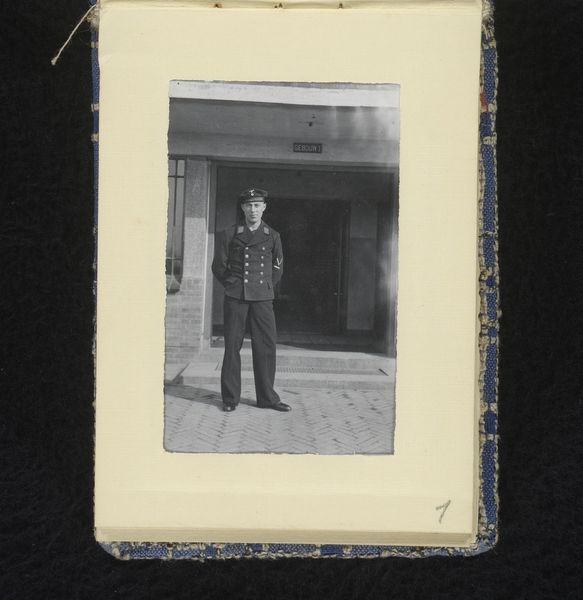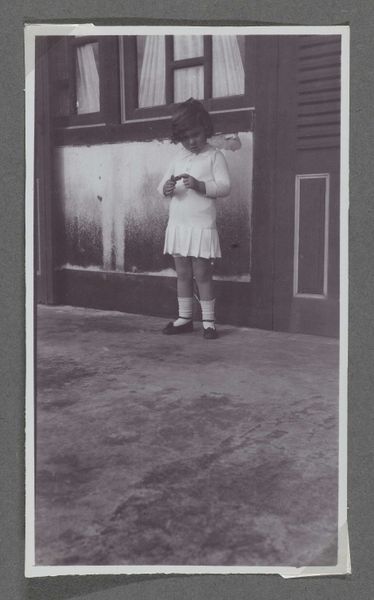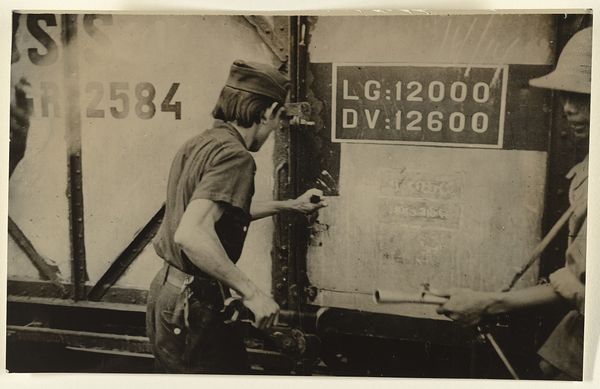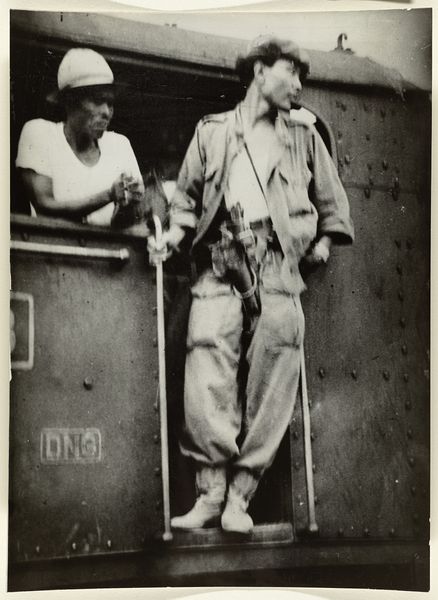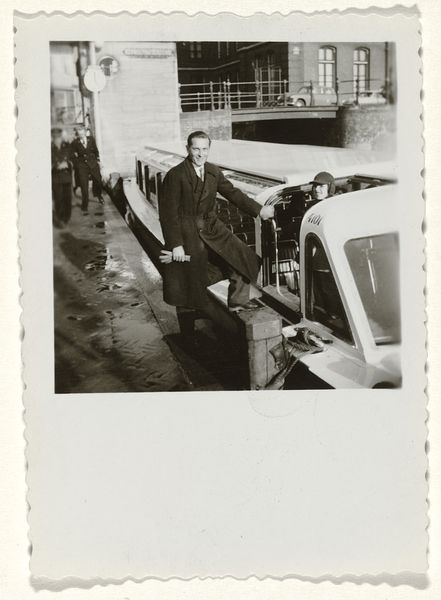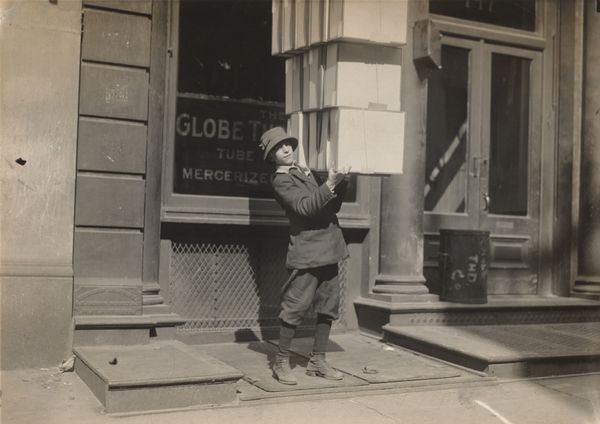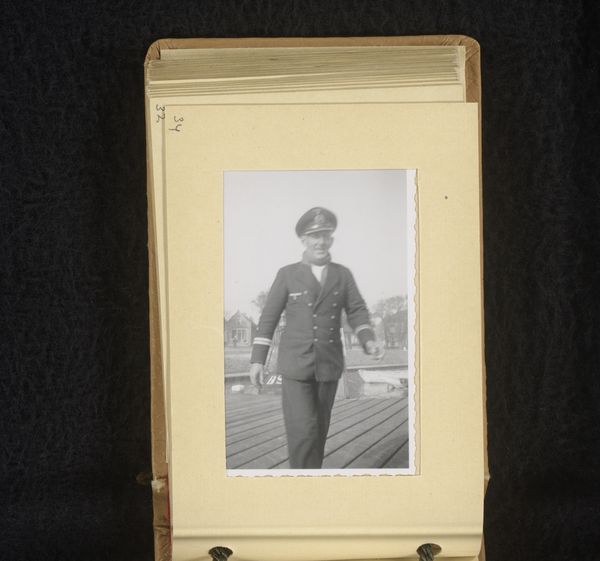
photography, gelatin-silver-print
#
portrait
#
photography
#
historical fashion
#
gelatin-silver-print
#
realism
Dimensions: height 87 mm, width 62 mm
Copyright: Rijks Museum: Open Domain
Curator: This gelatin-silver print, simply titled “Heinrich Clausen in een wagon,” dates from between 1941 and 1945. It’s an anonymous work, though the subject’s name provides a starting point, at least. Editor: It has a stark and strangely casual feel, given the historical context. A young man stands in the open doorway of a railway car, holding something – a cup maybe? – looking directly at the camera with a neutral expression. Curator: Exactly. If we dig into the when and where – the setting is presumably wartime Rotterdam given the handwritten note at the bottom – it becomes more fraught. The seemingly mundane image gains a sharp edge. We must consider the railway's role during that era and the politics imbued in imagery by forces and historical context. Editor: Of course. What does his uniform signify, his age in those tumultuous years? The visual vocabulary of wartime photography often leans toward propaganda, control, and visibility. But there is something disarming about how ordinary the composition is – as if any amateur might have taken this picture. It raises so many intersectional questions about culpability, belonging, and resistance. Curator: It speaks to the normalization of extraordinary events. How do we reconcile personal narrative within systemic injustice? The social fabric of Europe was shredded during those years and in viewing something as quotidian as a snapshot one almost gets pulled into that everydayness – and then we must ask how that implicates the person and ourselves. Editor: And consider the role photography played as a medium during this time: evidence, surveillance, and as an aesthetic exercise during war-time occupation. It’s a compelling collision of mundanity and deep unease. Looking at this through contemporary lenses challenges any notion of passive observation; it becomes active participation, for better or worse. Curator: Indeed. The simple act of preservation invites reflection on whose stories are prioritized, and how dominant narratives affect memory. It compels engagement with historical materials with all of the ambiguities and open wounds still palpable. Editor: Absolutely, a photograph is not just a piece of the past, but an artifact deeply connected to the ongoing narratives that shape our present and futures. Curator: Precisely, thank you for helping highlight those ideas.
Comments
No comments
Be the first to comment and join the conversation on the ultimate creative platform.
